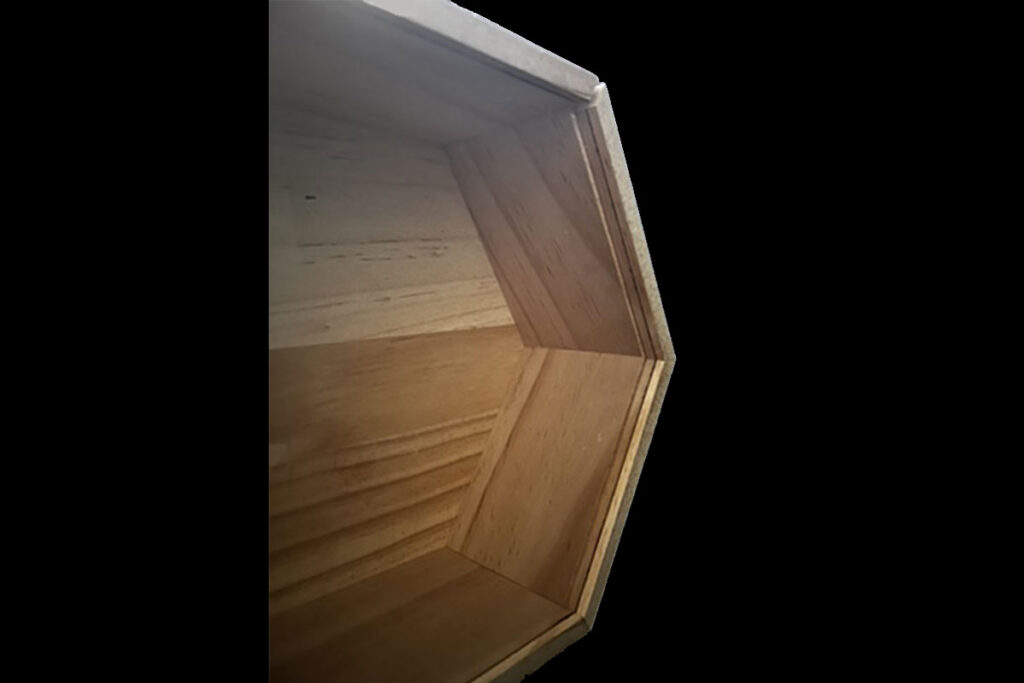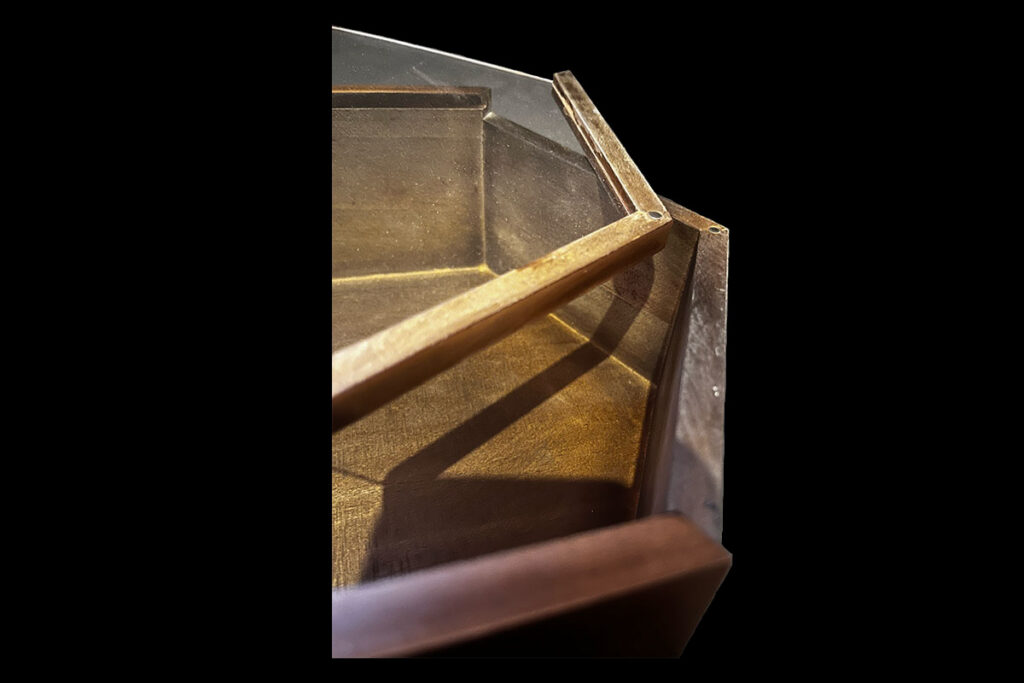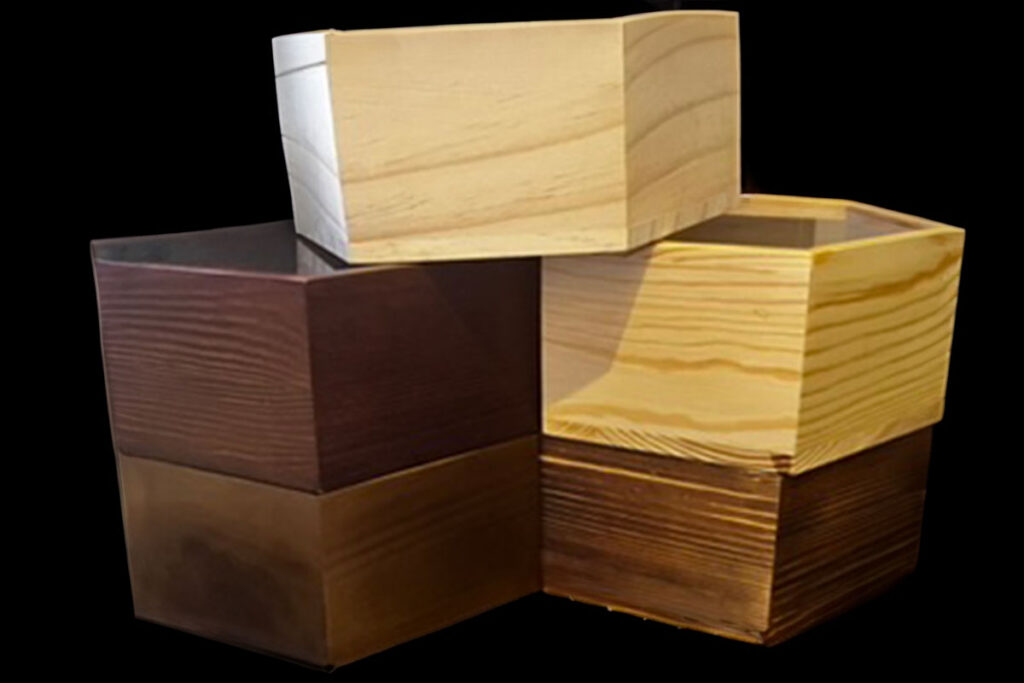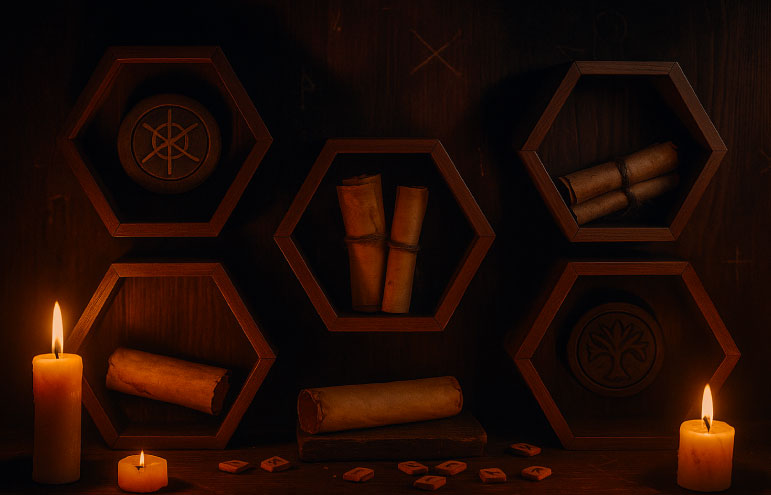The Wounds:
Wound I — The Collector Display That Couldn’t Hold the Symbol
There are objects you build.
And then there are objects that shape you as you attempt to build them.
The HexCase belongs to the second kind.
For months, our workbench became an altar. Each day brought new measurements, new materials, new hopes—and new failures. What began as a straightforward product idea for a collector display evolved into something more sacred, more symbolic. It no longer felt like we were crafting a display case card holder. We were trying to channel a vessel that deserved to exist. And it wasn’t letting us rush.
Each version we created had its own voice, its own rejection. They were not design errors; they were refusals. The object was speaking. And we had to listen.
The first version was visually striking. The frame was clean and modern, built with the confidence of early excitement. We imagined it would be the perfect solution for a shelf card or collector card. But the wood betrayed us.
The material meant to hold the crystal centerpiece—a relic of deep symbolic weight—wouldn’t align properly. It warped slightly, but enough to dishonor the purpose. It didn’t physically collapse, but spiritually it was hollow. It didn’t break. It gave up.
That was the first wound. And the first lesson: aesthetics mean nothing without alignment.

Wound II — The Closure That Refused
In our second attempt, we improved the structure. Hidden hinges. Smooth joins. A quiet mechanism designed to feel weightless, ceremonial. On paper, it was ideal. For a collector tcg setup, it offered a sleek open-close gesture that felt like a ritual itself.
But even when mounted, the door refused to cooperate. Gravity pulled it askew. The alignment slipped. The door opened, yes—but never with dignity. The HexCase wouldn’t hold the sacred through force. It needed to accompany it.
That was the second wound. Function alone wasn’t enough.

Wound III — The Shape That Imitated Meaning
Desperation began to take hold. For the third version, we reversed the grain, altered the angle, reshaped the wood entirely. It looked good. It looked close.
But something was off. The door still didn’t sit correctly. And more than that—it felt wrong. The design was no longer channeling intention. It was copying.
It mimicked the final vision without earning it. To a trained tcg collector, this is a familiar sensation—cards that look rare but lack soul. This case felt the same: a ghost of a collector display, not the real thing.
That was the third wound. It taught us to stop faking symmetry.

Wound IV — The Collector TCG Material That Lacked Spirit
The fourth version marked a small breakthrough: the frame finally aligned, and the closure behaved. For a moment, it felt like we were approaching completion. It could easily have been marketed as a premium display case card unit for any collector tcg enthusiast.
But the material failed us. The wood, while durable and inexpensive, lacked essence. It felt soft in the hand. Its weight didn’t speak. It didn’t carry the presence one expects when unveiling a relic. This wasn’t a frame—it was furniture.
No collector card deserves to rest in something forgettable.
That was the fourth wound. Beauty needs bones.

Wound V — The Vessel Without Echo
The fifth prototype almost succeeded. It was elegant. Refined. It promised completion.
But when it closed, we felt… nothing.
There was no click, no resistance, no resonance. The object sealed, but didn’t remember doing so. And that silence, in this case, was not sacred—it was sterile.
So we turned to the unseen. We embedded a magnet into the frame. It created a new kind of closure: not mechanical, but emotional. Quiet, firm, intuitive. Like closing a book that holds memory.
That was the fifth wound. It taught us that objects must echo to matter.

The Stack of Failures
We didn’t discard the failed versions. We kept them—stacked like stones, one atop the other. A quiet altar of error.
To an outsider, it might look like a line of failed prototypes for a tcg display. To us, it’s a physical timeline of devotion. A shelf card for every mistake that guided us closer to truth.
And then it happened.
Not through design, but through surrender.

The Sixth Face — A Display Case Card Forged from Failure
The sixth version wasn’t built. It emerged.
When we stopped forcing form and started listening to function, it appeared.
Not as a display case. As a threshold.
Not as a frame. As a silence that breathes.
It doesn’t seek to be just another collector display among many. It seeks to house one thing: presence. It doesn’t trap. It accompanies. It doesn’t shine. It holds stillness.
To a tcg collector with reverence for the ritual, the HexCase will not feel like a luxury—it will feel like a necessity that had always existed.
The Updates Begin
We’re no longer building.
We’re conjuring.
You may have already seen traces of the HexCase online. Not in product launches or press releases, but in symbols. In photos that linger. In short posts that resonate more like prophecy than advertisement.
They are appearing now—subtly, intentionally—in our Updates section. We invite you to watch not for announcements, but for signs.
Not all relics arrive with a trumpet.
Some arrive with a whisper.
Stay Vigilant
For those who collect not just cards, but meaning.
For those who treat their tcg display as more than decoration.
For those who believe a display case card deserves soul—
The HexCase is revealing itself.
Watch what doesn’t shout.
See what appears and disappears.
Feel what cannot be explained.
The Presence is stirring.
And the Veil… opens.

